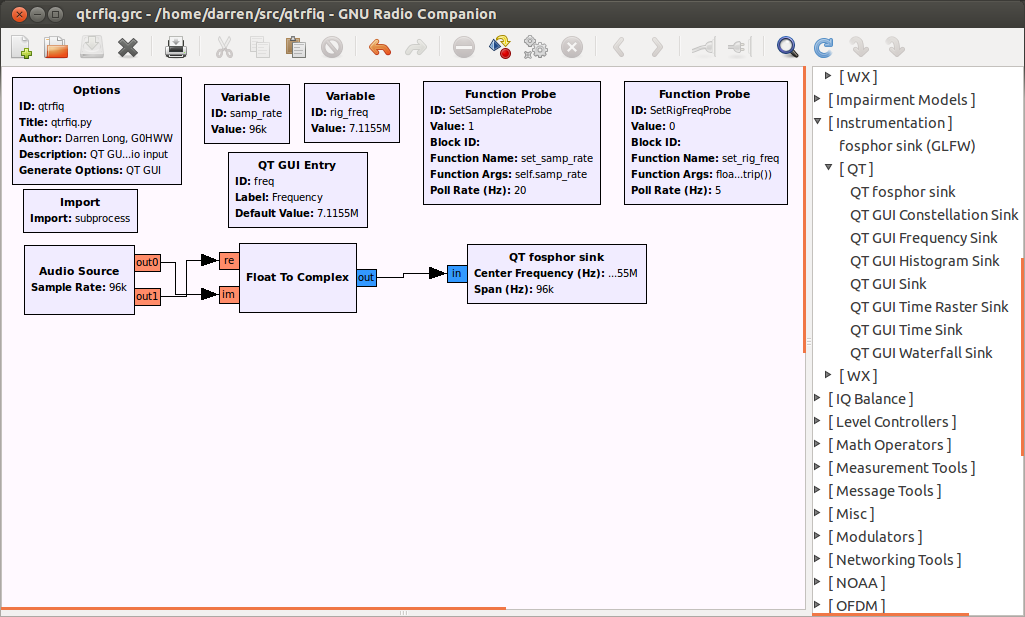I've written his blog post primarily as a place to store my screen shots related to a topic that I initiated on the Elecraft mailing list about the UHF emissions I have noticed emanating from my KX3. The full topic thread can be seen
here.
These screen-shots have been taken using
osmocom_fft, with my USRP-B100 and WBX daughterboard connected the discone antenna in my loft. My preamp is set for 0dB gain, the USRP gain is set to a total of 43dB which is about as high as I tend to set it in order to avoid intermod.
The first few pictures are with my KX3 in its normal position with its normal cable connections, in its normal configuration, set to 7.080Mhz. The cables are smothered in #61 ferrite.
Firstly a 8Mhz spectrum capture (below) shows a fairly high noise floor due to the bandwidth and a faint trace of the sproggy (in the centre), but some other signals towards the upper end of the spectrum, probably TETRA stuff or similar.
Next, the same scenario, but with 125kHz sample-rate/bandwidth to drop the noise floor.
Note that averaging is enabled in all of these plots. The next one had peak hold enabled so that we can see the effect of sweeping the VFO on the KX3.
Just a quick recap, the above pics shows the results of my attempts so far to suppress the UHF emissions externally. Perhaps I could do better.
The next picture is with the KX3 disconnected from everything, but sat in the same location.
The next picture is with the KX3 relocated to the kitchen, about 30 ft away from it's operating position. Both of these locations are roughly equidistant from the discone antenna in the loft, which is about 30ft away.
This one is with the KX3 relocated upstairs, to within 8ft of the discone antenna. There are still no cables attached.
I then moved the KX3 back to its normal operating position, the same scenario as the 4th picture.
I then insert the right angled 2.5mm to in-line 3.5mm stereo adapter cable, which is about 6 inches in length when straight.
This time, I have two turns (they just fit) of the 2.5mm to 3.5mm adapter cable around the mix #61 ferrite toroid. The peak hold is left from the last shot, so we can see the improvement.
Finally, the KX3 is restored to its normal state of connectivity, with antenna, power, CAT via Acc1, I/Q, audio out and in cables attached. I have 3 toroidal chokes with various numbers of turns on the I/Q cable, and a bunch of snap-ons with a couple of turns and the remaining toroidal chokes smothering the other cables. This time, the sample-rate is increased to 1MHz, and I have enabled the 8kHz Rx Shift, which moves the sprog down 55*8kHz, to the left hand end of the spectrum. An unrelated signal appears to the right of the relocated sprog and a peak trace of another unrelated signal appears near the right hand edge.
Update:
So far, I've found spurs on (some of) the 10th, 20th, 40th, 55th, 75th and 100th harmonics
of various VFO frequencies.
With my VFO on 21.25Mhz, I'm getting an S-band spur on the 100th harmonic at
2.125GHz.
























